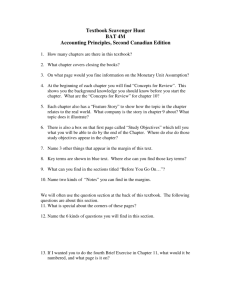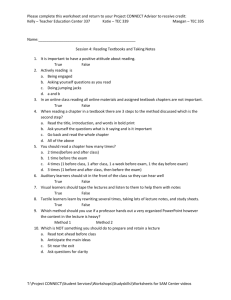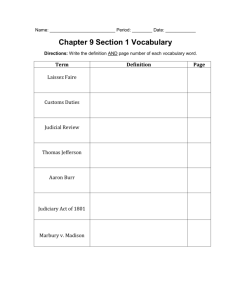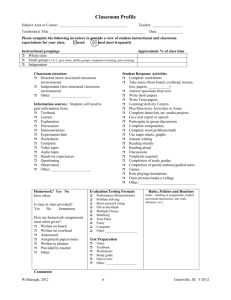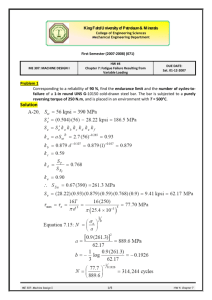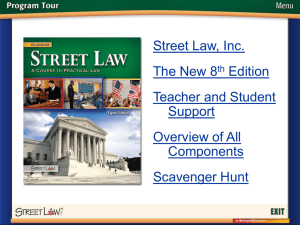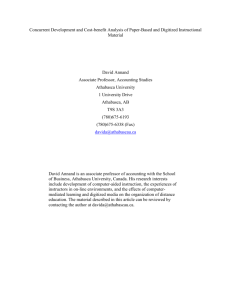Lesson Plan Form
advertisement
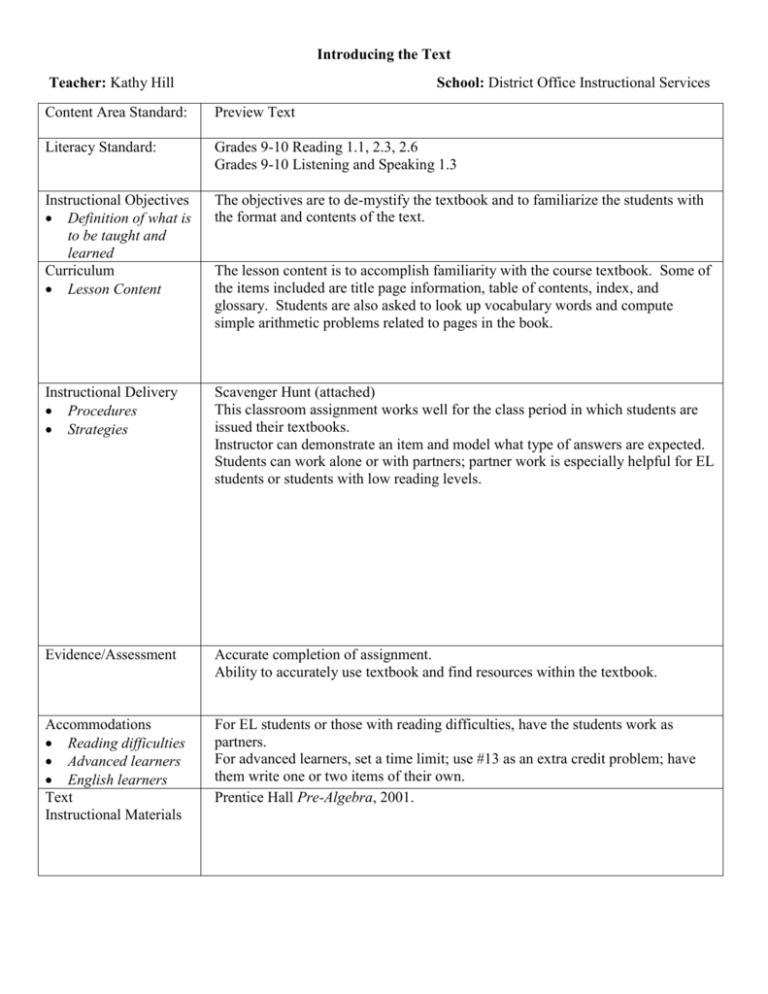
Introducing the Text Teacher: Kathy Hill School: District Office Instructional Services Content Area Standard: Preview Text Literacy Standard: Grades 9-10 Reading 1.1, 2.3, 2.6 Grades 9-10 Listening and Speaking 1.3 Instructional Objectives Definition of what is to be taught and learned Curriculum Lesson Content The objectives are to de-mystify the textbook and to familiarize the students with the format and contents of the text. Instructional Delivery Procedures Strategies Scavenger Hunt (attached) This classroom assignment works well for the class period in which students are issued their textbooks. Instructor can demonstrate an item and model what type of answers are expected. Students can work alone or with partners; partner work is especially helpful for EL students or students with low reading levels. Evidence/Assessment Accurate completion of assignment. Ability to accurately use textbook and find resources within the textbook. Accommodations Reading difficulties Advanced learners English learners Text Instructional Materials For EL students or those with reading difficulties, have the students work as partners. For advanced learners, set a time limit; use #13 as an extra credit problem; have them write one or two items of their own. Prentice Hall Pre-Algebra, 2001. The lesson content is to accomplish familiarity with the course textbook. Some of the items included are title page information, table of contents, index, and glossary. Students are also asked to look up vocabulary words and compute simple arithmetic problems related to pages in the book. From the Lenski text, modeled from 2.1 teaching strategy 2, page 11 Goal: To de-mystify the textbook; to familiarize students with the text Course: Foundations 1 or 2 Text: Prentice Hall Pre-Algebra Scavenger Hunt On the day that students receive their texts, have them do a scavenger hunt within the book to find answers to the following questions. You may want to have students work in partners or have half of the class do the even numbers while the other half does the odd numbers; question #13 might be considered extra credit. 1. Where would you find a definition for the word “variable”? 2. Who is/are the author(s) of this textbook? 3. What year was this text copyrighted? How many years ago is that? 4. How many chapters are in this book? How many chapters do you think we will investigate this year? 5. Which chapter is about probability? On what page does it start? 6. How many pages are in chapter 5? How many pages of “tables” are there? 7. Using the appropriate table, find the square root of 80. What is the value of 80 x 80? 8. What is the answer to #33 on page 178? 9. If you look up “factor” in the index, how many different entries would you find? 10. If you need some extra help with multiplying decimals, is there a place in this book to look for this help? Where? 11. Fill in the definition: A line graph is a graph that shows ___________ _________ __________ . 12. Small sections titled “Error Analysis” appear throughout each chapter. What is the purpose of those sections? 13. How much larger population does Chicago have than Los Angeles? On what page did you find this information?
